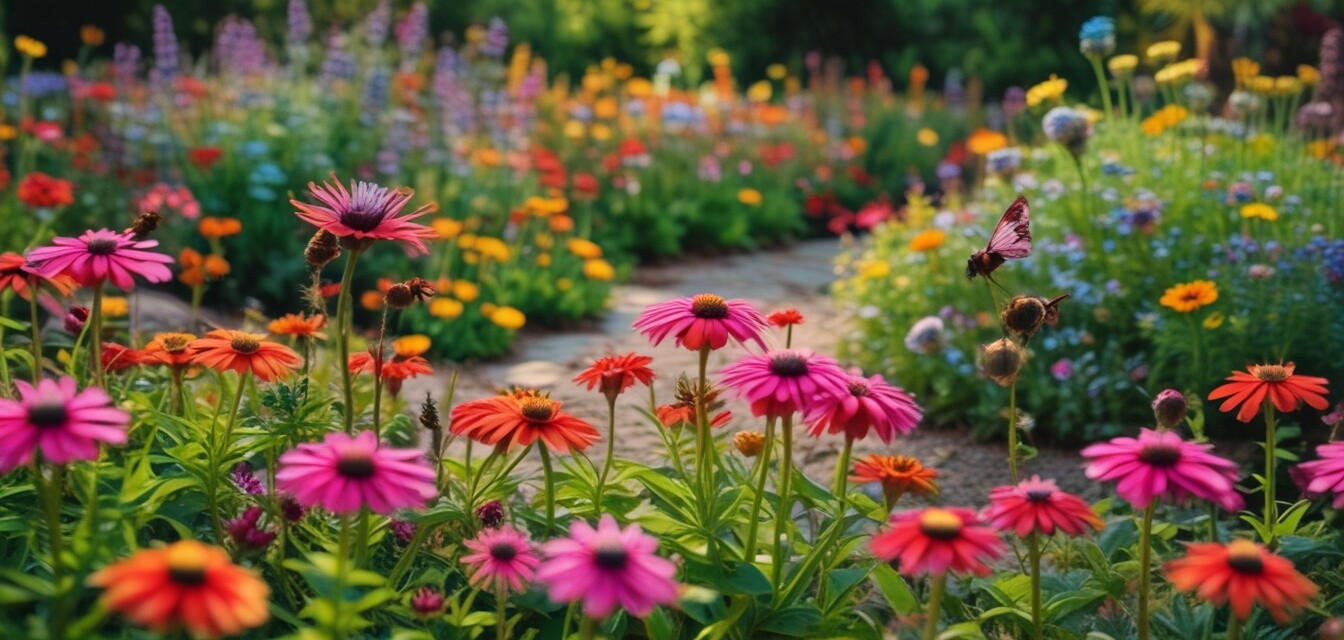
Designing a Garden for Pollinators
Key Takeaways
- Pollinator gardens support vital ecosystem functions by attracting bees, butterflies, and other species.
- Diverse plant selections provide food and habitat for various pollinators.
- Utilizing native plants can enhance the success of your garden design.
- A well-designed garden can create year-round interest and beauty.
- Consider water sources, shelter, and nest-building opportunities for pollinators.
Creating a garden specifically designed for pollinators can significantly contribute to the health of our ecosystems. Pollinators, such as bees, butterflies, and hummingbirds, are essential for the reproduction of many plants, making their habitats vital. In this article, we will delve into various design elements to consider when establishing a garden that attracts and supports these crucial species. From plant selection to layout considerations, let's explore how to design a welcoming space for pollinators.
Understanding pollinators and their needs
Before diving into the design aspect, it's essential to understand what pollinators need to thrive. Key elements include:
- Food sources: Nectar and pollen are crucial for their survival.
- Water: Pollinators need fresh water for drinking and cooling.
- Nesting sites: Different species require specific habitats for nesting.
- Protection: A safe environment away from pesticides and predators is necessary.
Choosing the right plants
Plants play a critical role in attracting pollinators to your garden. Here are some tips on selecting the best plants:
1. Go native
Native plants are adapted to your local environment, making them more resilient and more attractive to pollinators. They often require less maintenance and watering. Consider exploring our selection of eco-friendly fertilizers to complement your plant growth.
2. Incorporate a variety of species
A diverse selection of flowering plants will provide resources throughout the growing season. Here’s a suggested list of flowers that you might consider:
| Flower | Bloom Time | Pollinator Attraction |
|---|---|---|
| Milkweed | Late Spring to Early Fall | Butterflies (especially Monarchs) |
| Coneflower | Summer to Fall | Bees and butterflies |
| Sunflower | Summer to Fall | Bees and birds |
| Aster | Late Summer to Fall | Late-season pollinators |
3. Consider blooming times
To ensure that there’s food available throughout the year, choose plants that bloom in different seasons. Early bloomers provide food after winter, and late bloomers help through autumn.
Garden layout and design considerations
The design and layout of your garden significantly impact how effective it is for attracting pollinators. Here are some essential design considerations:
1. Create clusters of plants
Grouping plants together makes it easier for pollinators to find food. This design approach replicates natural habitats, encouraging more pollinator activity.
2. Use layers in your garden
Creating a layered garden with tall plants at the back and shorter ones at the front maximizes space and provides various habitats for different pollinators.
3. Incorporate pathways
Walkable paths make the garden accessible for you and can help guide pollinators through different areas. Consider using natural materials that blend with the garden aesthetic.
4. Add water features
Consider including a shallow water feature or birdbath to provide a fresh water source. Pollinators benefit from having easy access to hydration.
Maintenance tips for your pollinator garden
Once your garden is established, maintaining it is crucial to ensure it continues to thrive:
- Monitor plant health: Regularly check for pests and diseases and address any issues promptly.
- Limit pesticide use: Use organic pest control methods to protect both your plants and the pollinators.
- Adjust watering according to plant needs: Aim for a well-drained soil system but keep plants hydrated during dry periods.
Tips for beginners
- Start small: Begin with a few key plants and expand your garden as you gain confidence.
- Educate yourself about local pollinators: Understanding the species in your area will guide plant selection.
- Seek recommendations from local gardening groups or visit nearby gardens for inspiration.
Conclusion
A garden designed for pollinators is not only rewarding for the ecosystem but also for you as a gardener. By focusing on the needs of these vital species and integrating various elements into your garden's design, you can create a beautiful, vibrant space that attracts and retains them. Don't forget to explore our buying guides for additional information on selecting the best materials and tools for your gardening journey.
Pros
- Supports local ecosystems and biodiversity.
- Enhances aesthetic beauty with colorful, vibrant plants.
- Provides habitats for various pollinator species.
Cons
- Initial setup may require planning and investment.
- Regular maintenance is necessary to keep the garden thriving.